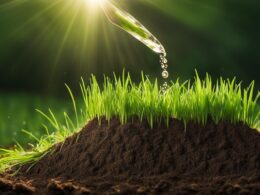Maple wood is a popular choice for woodworking projects, known for its durability and attractive grain. When it comes to maple wood, there are two main options to consider: soft maple and hard maple. Understanding the differences between these two types of maple can help you choose the best wood for your project.
Soft maple refers to four species of maple trees – silver maple, red maple, boxelder, and bigleaf maple. It is commonly used for railroad crossties, furniture, and woodenware. On the other hand, hard maple refers to two species of maple trees – sugar maple and black maple. It is commonly used for flooring, furniture, and cabinets.
The main difference between soft maple and hard maple lies in their density and strength. Hard maple is approximately 25% harder than soft maple, making it more suitable for applications where strength and durability are important. While both soft maple and hard maple are eco-friendly options, as maple trees are harvested sustainably, hard maple is often preferred for flooring due to its density and hardness. Soft maple, on the other hand, is commonly used for furniture and woodenware.
Whether you’re working on a flooring project or building furniture, understanding the differences between soft maple and hard maple will help you make an informed choice. Consider factors such as the specific application, desired strength, and the appearance of the wood grain when selecting the right type of maple for your project.
Understanding the Hardness and Density of Maple Wood
When it comes to choosing the right type of maple wood for your woodworking projects, understanding the hardness and density of the wood is important. This section will explore the differences between soft maple and hard maple, as well as the janka hardness scale and maple wood density.
Hard maple is known for its exceptional hardness and density. It is significantly harder and denser compared to soft maple. The janka hardness scale is commonly used to measure the hardness of wood species. It determines the force required to embed a steel ball halfway into the wood. Hard maple has a janka hardness rating of 1450, while soft maple has a rating of 950. This means that hard maple is approximately 25% harder than soft maple.
In terms of density, hard maple has an average density of 44 lbs/ft3, while soft maple has an average density of 32-38 lbs/ft3. This difference in density contributes to the overall strength and durability of hard maple.
Having a greater hardness and density makes hard maple more suitable for applications where strength and durability are crucial. For example, hard maple is often used in butcher blocks and workbench tops due to its ability to withstand heavy impact and wear.
When considering which type of maple wood to use for your project, it is important to assess the specific requirements and desired properties. Hard maple’s hardness and density make it an excellent choice for projects that demand robustness and longevity.
Continue reading to discover the different types of maple wood and their best uses.
Different Types of Maple Wood and Their Uses
Maple wood comes in various types, each with its own unique characteristics and applications. One popular type is sugar maple (Acer saccharum), which is known for its stunning grain patterns and exceptional durability. It is commonly utilized in the production of furniture, hardwood flooring, cabinets, and kitchen accessories.
Another type of hard maple wood is black maple (Acer nigrum). It closely resembles sugar maple in terms of appearance and properties, making it an excellent alternative. Black maple exhibits similar qualities, making it suitable for similar applications as sugar maple.
On the softer side, there is red maple (Acer rubrum) wood. This type of maple wood, known for its reddish-brown hue, is commonly used in furniture making, veneer production, and crafting woodenware. While it is less dense and hard compared to hard maple, it still offers versatility and aesthetic appeal.
Silver maple (Acer saccharinum) is another soft maple wood variety. It derives its name from the silvery hue of its leaves. A popular choice in furniture and flooring projects, silver maple wood provides an elegant and unique touch to woodworking creations.
When selecting maple wood for your specific project, it is crucial to consider the characteristics and uses of each type. Understanding the distinctions between sugar maple, black maple, red maple, and silver maple will help you make an informed decision and achieve the desired outcome for your woodworking endeavor.
Can Soft Maple Trees Be Planted in Areas with Shallow Soil?
Yes, soft maple trees can be ideal shallow root trees yard options for areas with shallow soil. These trees have shallow root systems that can adapt well to limited soil depth. They are a great choice for yards and landscaping in locations with shallow soil conditions.










